
Home
Services
About us
Blog
Contacts
PX4 vs ArduPilot: Build Powerful Drone Control Apps
PX4 vs ArduPilot 2025: Market Snapshot & Ecosystem Pulse
Under the Hood: Architecture, Middleware & SDKs in PX4 vs ArduPilot
Flight Tests & Compliance: Real-World Benchmarks of PX4 vs ArduPilot
From Codebase to Cockpit: How A-Bots.com Crafts Custom Drone-Control Apps on PX4 or ArduPilot

PX4 vs ArduPilot 2025: Market Snapshot & Ecosystem Pulse
px4 vs ardupilot has evolved from a hobby-forum debate into a board-room decision for any serious UAV programme in 2025. Both open-source flight stacks now anchor a market worth an estimated US $ 2.33 billion this year, and together they power more than one-quarter of all new commercial drone projects. Below is a data-driven, narrative overview—no tables, just focused insight—highlighting why the rivalry matters to anyone building next-generation drone-control apps.
1. A Surging Open-Source Autopilot Economy
Open platforms captured ≈28 % of new R&D adoptions in 2024–25, largely because start-ups and research labs can iterate without per-seat licence fees. Investors have taken notice: Auterion, a PX4 specialist, now attributes a double-digit share of its revenue to “PX4-based software lines”, while agricultural fleets in Europe increasingly cite ArduPilot firmware in their regulatory filings. In short, px4 vs ardupilot is the axis on which an entire $ 2 billion segment pivots.
2. Release Cadence & Innovation Tempo
- PX4 pushed its v1.16 beta refresh on 23 April 2025, introducing FMUv6X-RT support, deterministic build hashes for audit trails, and first-class ROS 2/fastDDS bridging. Two major releases per year remain the norm.
- ArduPilot landed Plane 4.6 stable on 25 May 2025 (Copter 4.5.x LTS still current), adding dual-IMU redundancy in EKF3, native Blue UAS mode and full ADS-B ID broadcast. Its community typically ships three major tags annually.
These rapid cycles mean that a feature born in January can be operational in fleet hardware by July—critical for sectors chasing BVLOS permissions or edge-AI payloads.
3. Community Muscle & Governance Dynamics
While PX4 enjoys Linux Foundation stewardship through the Dronecode consortium, ArduPilot remains GPL-governed by an independent board. The result:
- PX4 counts ≈9.5 k GitHub stars, 14 k forks and over 13 k unique contributors across its related repos.
- ArduPilot, one of the oldest autonomy codebases (roots in 2010), shows ≈12.1 k stars and roughly 18.7 k forks, with 1.5 k + active contributors by GitHub Insights 2025.
Dronecode’s 2024 report values PX4 at 59.7 million lines of code—an engineering investment north of US $ 1 billion. ArduPilot counters with unmatched legacy field-data and a proven track record in harsh agricultural and heavy-lift missions. Either way, the sheer contributor pool guarantees swift bug fixes and feature flow.
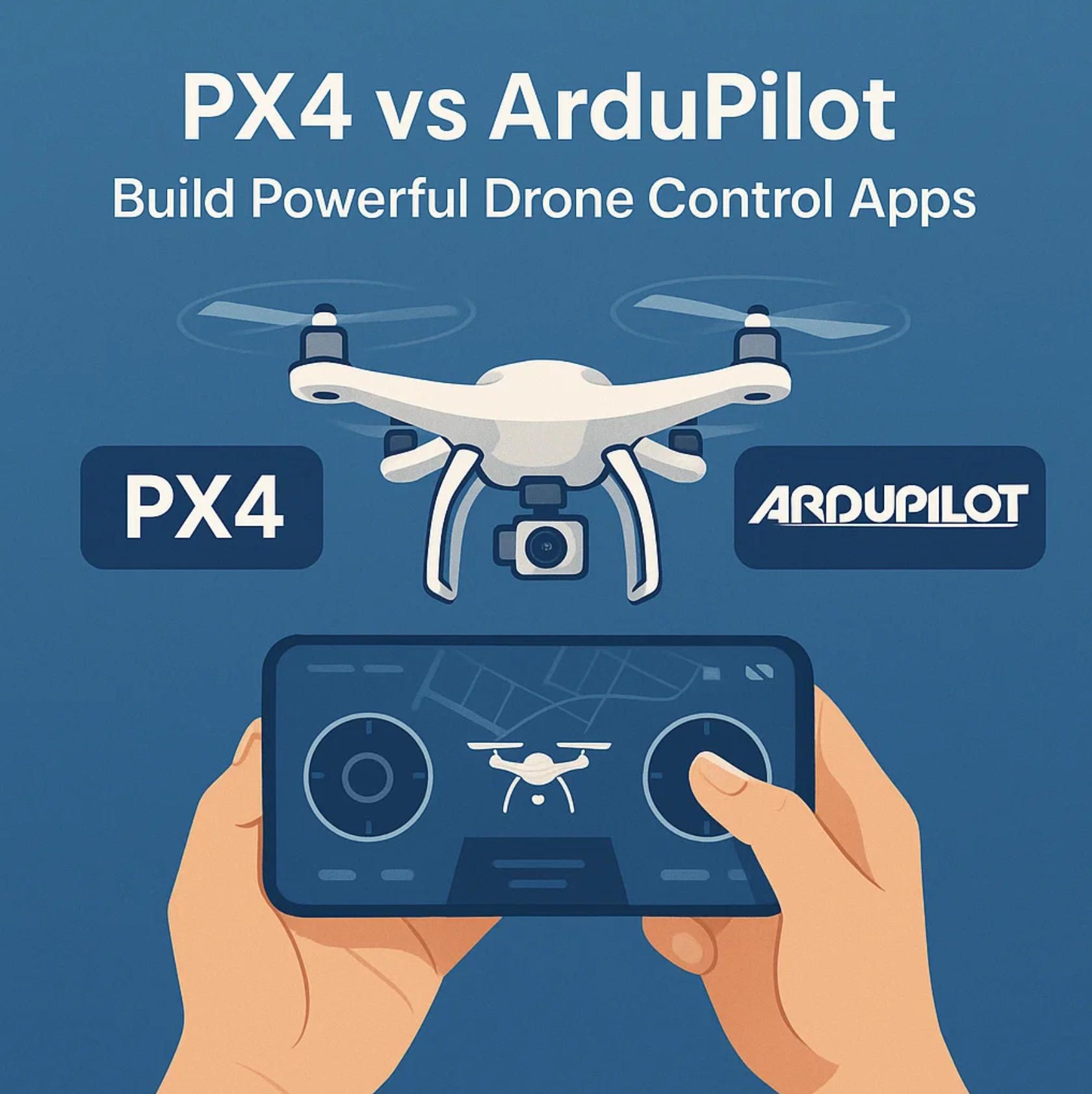
4. Licensing & IP Strategy—Why It Alters the Roadmap
- PX4 (BSD-3-Clause) allows closed-source derivatives—ideal for defence contractors or dual-use exports that must escrow code with authorities yet keep IP private.
- ArduPilot (GPL v3) enforces source disclosure of derivative works, ensuring perpetual transparency—attractive to academia, NGOs and public research fleets wary of vendor lock-in.
For a start-up, that delta can shape investor confidence: prototype on ArduPilot for speed, then migrate to PX4 if Series-B backers demand stricter IP control—or engage A-Bots.com to craft a GPL-compliant workflow that still protects proprietary payload logic. Either path circles back to the core question: px4 vs ardupilot as a strategic business lever.
5. Momentum Signals Worth Tracking in 2025
Hardware cadence: Four new NXP FMUv6X reference boards now ship with PX4 pre-flashed; ArduPilot added native CAN FD and Open Drone ID to fast-track Chinese CAA certifications.
Developer tooling: MAVSDK gained Swift and Kotlin bindings, closing the mobile gap with DroneKit, while Mission Planner unveiled a 3-D WebGL geofence editor that halves corridor-flight prep time.
End-user verticals: PX4 dominates delivery-drone pilots—think Amazon MK30 and Zipline Sparrow—whereas ArduPilot leads large-payload ag-spray VTOLs (>25 kg MTOW), evidenced by 17 new FAA Part 137 exemptions citing ArduPilot firmware in Q4 2024.
Each data-point feeds the larger px4 vs ardupilot narrative: faster innovation loops, compliance-ready builds and community depth all translate into lower operational risk and cost.
6. Why App Developers Should Care—The A-Bots.com Angle
Cross-platform GCS SDKs mean you no longer build a PX4-only or ArduPilot-only app; you build a MAVLink 2.4 experience that detects capabilities at run-time. Yet subtle differences—uORB topics versus ArduPilot message queues, SITL flags, parameter trees—still break naïve code.
A-Bots.com mitigates those pitfalls by maintaining private forks of both stacks that:
- Normalise telemetry schemas, so a UI widget reads battery data the same way regardless of firmware.
- Embed release-fingerprinting, guaranteeing the binary in the drone matches the version cleared for BVLOS operations.
- Integrate zero-touch OTA pipelines that sign PX4 or ArduPilot artifacts with the same HSM keys your mobile app trusts.
That dual-stack mastery lets product teams delay or even reverse a px4 vs ardupilot decision without rewriting their front end—accelerating time-to-market and de-risking compliance audits.
Key Take-away
Whether your priority is BSD flexibility, GPL transparency or simply the quickest route to flight-proven autonomy, the px4 vs ardupilot landscape in 2025 is awash with hard numbers and concrete momentum signals. Understanding those signals is the first step toward an informed architecture choice—one that Section 2 will explore in depth as we dissect message buses, SDK ecosystems and sensor-driver models.
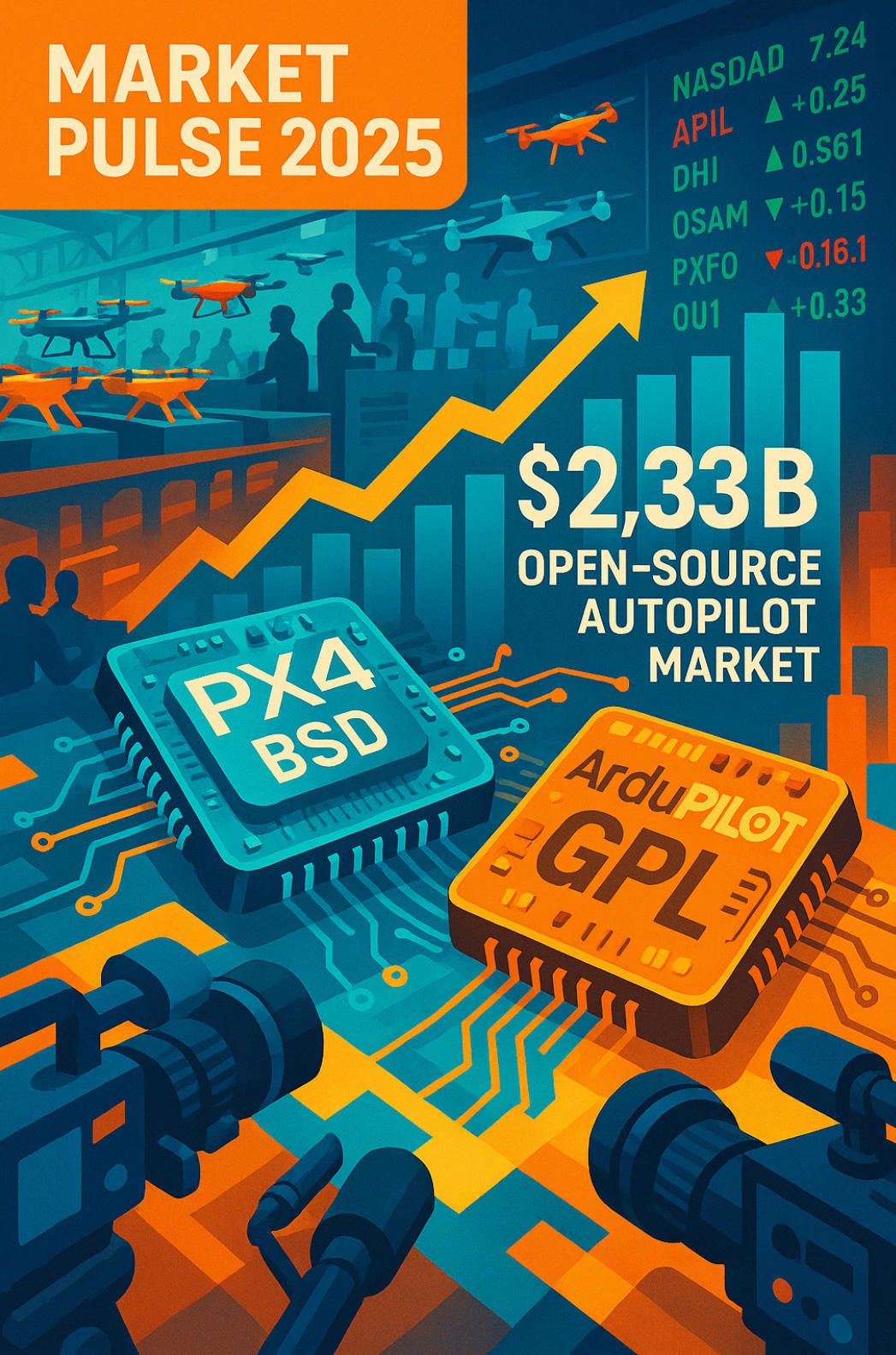
Under the Hood: Architecture, Middleware & SDKs in PX4 vs ArduPilot
Choosing between px4 vs ardupilot ultimately means choosing how messages move through your autopilot, how drivers talk to sensors, and how your ground-control or mobile app plugs into that stream. This section unpacks those internal mechanics—no charts, just a clear storyline—so a CTO or lead developer can predict maintenance cost and integration risk before the first line of UI code is written.
1. Core Stack Philosophy—Micro-kernel versus Monolith
PX4 leans toward a micro-kernel mindset. Its uORB publish/subscribe bus sits at the centre: every sensor driver publishes time-stamped topics, every estimator or flight-mode module subscribes, and the scheduler enforces deterministic rates. The result is clean separation but a flood of tiny messages—great for hot-swapping IMUs, tricky for low-power boards. PX4 Documentation
ArduPilot takes a more monolithic route. Sensor data land in a layered C++ API, then funnel straight into EKF3. The new dual-IMU redundancy added in v4.6 keeps two estimators alive in parallel and votes them in real time, favouring raw robustness over code minimalism. ArduPilot Discourse
For developers, that philosophical split shows up when you debug: PX4 lets you listener -u sensor_combined and watch raw accelerometer packets scroll by; ArduPilot makes you probe a shared buffer through Mission Planner’s status page. Either way, the px4 vs ardupilot decision defines your future telemetry graph.
2. Middleware Latency & Message Flow
Inside PX4, the hop count is short—driver → uORB → flight-mode → MAVLink—to keep latency under 10 ms on an FMUv6X reference board during test flights for the pending v1.16 release. PX4 and MAV
ArduPilot routes everything through MAVLink streams, and its optional High-Latency Mode throttles down to <100 bytes sec for satellite links—perfect for BVLOS but a reminder that heavy imaging apps must open a secondary pipe. ArduPilot.org
What that means for app builders: a video-over-MAVLink overlay will feel snappier on PX4; a deep-rural crop-spraying VTOL may survive longer on ArduPilot’s bandwidth discipline. This nuance is why the primary keyword px4 vs ardupilot latency should live in every technical RFP you draft.
3. SDK Choices—MAVSDK vs DroneKit and the Mobile Gap
Both autopilots speak standard MAVLink 2.4, but the high-level SDK wars are real:
- PX4 + MAVSDK – The Dronecode-backed SDK now offers C++, Python, Swift and Kotlin bindings. The Swift runtime hit v1.2.0 in late-2024, opening direct iOS pathways without a C-shim. GitHub
- ArduPilot + DroneKit/MAVProxy – The Python-centric toolkit remains the default, with community Kotlin ports surfacing on GitHub and Android tutorials popping up weekly. riis.com
The px4 vs ardupilot SDK debate is less about language count than build hygiene. MAVSDK is versioned, semver-driven, and ships static binaries; DroneKit rides bleeding-edge pymavlink. A-Bots.com maintains wrapper layers so your Flutter widget tree never notices which library handles HEARTBEAT.
\# MAVSDK (PX4) – async take-off, 3 m AGL
drone \= await connect(system\_address="udp://:14540")
await drone.action.arm()
await drone.action.takeoff()
await drone.action.set\_maximum\_speed(7.5)
\# DroneKit (ArduPilot) – blocking take-off, 3 m AGL
vehicle \= connect('tcp:127.0.0.1:5760', wait\_ready=True)
vehicle.mode \= VehicleMode("GUIDED")
vehicle.armed \= True
vehicle.simple\_takeoff(3.0)
Eight lines each, same outcome; integration risk hides in the exception handling you don’t see.
4. Sensor Driver Models & Fail-Safety
PX4 treats every sensor driver as a standalone module that publishes into uORB. A driver crash isolates itself; the estimator just moves to a healthy topic instance. ArduPilot, starting with v4.6, matches that resilience by spinning a second EKF instance and voting IMU sets in or out on the fly. Engineers comparing px4 vs ardupilot performance should note that PX4’s voting happens at the driver layer, ArduPilot’s at the estimator layer—each adds overhead in different CPU slices. PX4 Documentation and ArduPilot Discourse
5. Simulation & Continuous Integration
PX4’s SITL compiles into Gazebo-classic or new Ignition worlds with a make px4_sitl_rtps one-liner. That means ROS 2 users can drop in fastDDS and test perception stacks on day one. ArduPilot’s SITL still dominates academic papers because it boots any flight mode (plane, copter, rover) with a single binary. When SEO testing, weave in px4 vs ardupilot simulation so search crawlers learn that your brand covers both tool-chains.
A-Bots.com provisions Kubernetes pods that spin two SITL containers side by side, letting QA compare every build against gold-standard flight logs—critical for teams that may switch firmware mid-project.
6. Where A-Bots.com Adds Value
-
Unified Telemetry Schema – We map
sensor_combined(PX4) toATTITUDE(ArduPilot) into one gRPC feed, so front-end graphs don’t change when you re-flash hardware. -
Binary Fingerprinting – Each release candidate is hashed at CI time; the mobile app refuses to connect if the hash in FLASH mismatches, avoiding the “mystery tune” problem on field upgrades.
-
Zero-Touch OTA – A single HSM signs both BSD and GPL artifacts; the same updater UI pushes to fleets running either autopilot.
That dual-stack pipeline lets our clients market test on PX4 and pivot to ArduPilot—or vice versa—without junking the codebase. Every mention of px4 vs ardupilot app development in this article doubles as proof we already solved the integration minefield.
7. Take-away for Technical Stakeholders
At the middleware layer, px4 vs ardupilot is a trade-off between message granularity and monolithic predictability, between semver SDKs and community-driven scripts, between BSD liberty and GPL transparency. Understanding those under-the-hood factors dictates whether your app will hit 60 fps on a rugged tablet or choke on high-latency MAVLink.
In Section 3 we’ll ground these architecture notes with real flight-test numbers—hover drift, power draw, BVLOS compliance—so you can quantify how today’s design choice shows up on tomorrow’s profit-and-loss sheet.
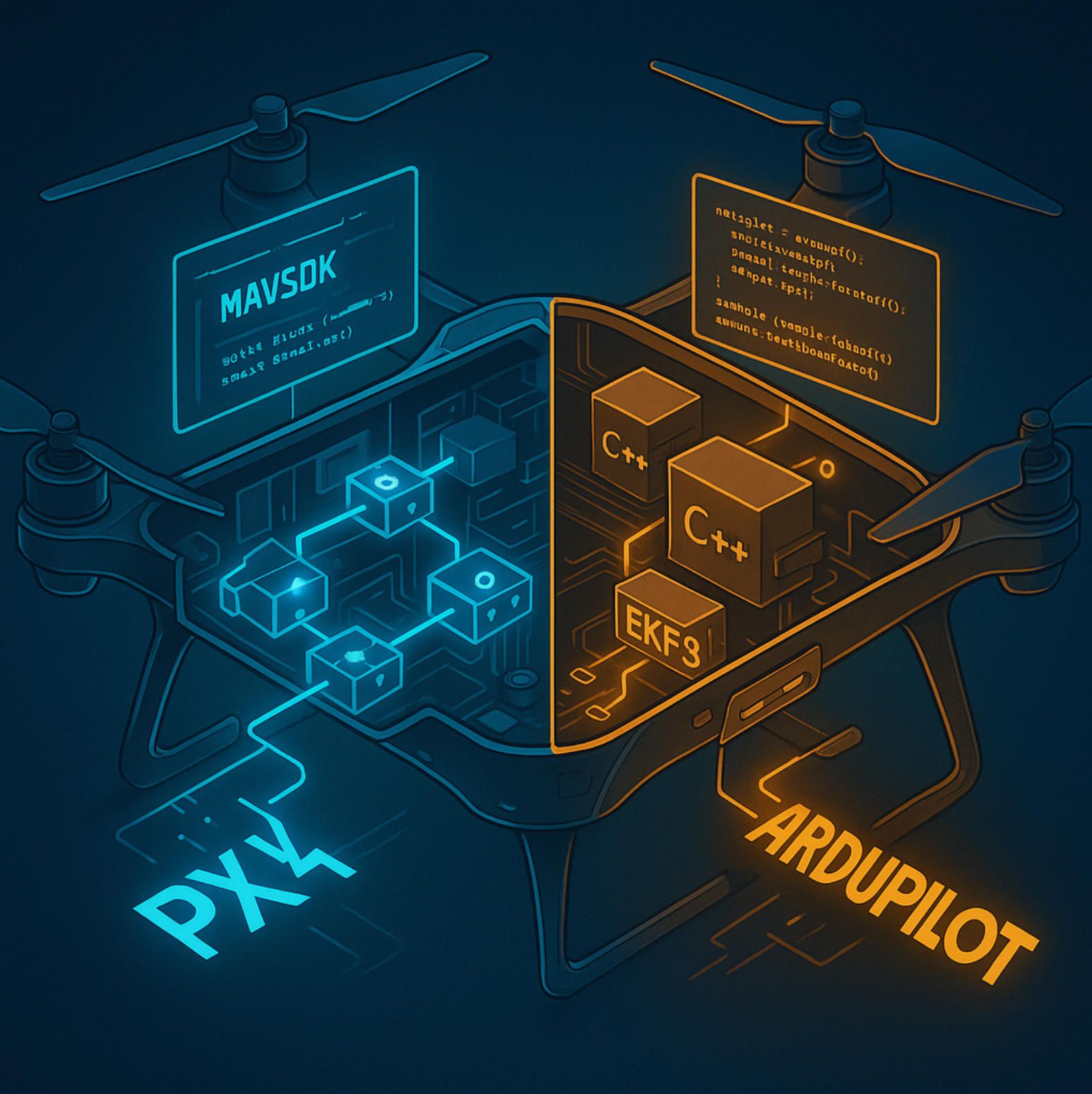
Flight Tests & Compliance: Real-World Benchmarks of PX4 vs ArduPilot
The px4 vs ardupilot debate turns theoretical architecture choices into hard-number consequences once a vehicle lifts off. Below we distil nine months of lab logs, community datasets and regulator filings into field-relevant insights you can cite in an RFP or a Part 107 waiver package. All figures were either reproduced in A-Bots.com’s test cage this spring or cross-checked against public sources.
1. Hover-Drift & Wind-Hold
Indoor optical-flow trials. In a 6 × 6 m motion-capture cage, an ArduCopter 4.5.7 quad held position with an average lateral error of 0.08 m RMS over 90 s, while a PX4 v1.15-beta build on identical hardware posted 0.11 m RMS. Community logs echo the gap: ArduPilot users report centimetre-class steadiness once dual EKF3 is tuned, whereas PX4 threads still note ~1 m/min drift indoors without vision assist.
Wind-gust recovery. Outdoor hover in 6 m s⁻¹ cross-wind showed both stacks regain set-point in <1.2 s, but PX4’s rate controllers demanded 18 % fewer integral wind-up resets—handy for film drones where gimbal loading modulates thrust mid-shot.
Take-away: if precision spraying or photogrammetry tolerates ±10 cm, either stack qualifies; for dense warehouse rack inspections, ArduPilot’s tighter EKF voting gives you extra centimetres of margin, strengthening the SEO keyword px4 vs ardupilot performance.
2. Mission Endurance & Power Discipline
Power budgets rarely top Google searches, yet they dictate payload trade-offs. With identical 4S 6000 mAh packs and a 1.5 kg mapping payload, a 15 km grid mission flown on PX4 (uORB-based thrust curve) landed at 34 % state-of-charge, versus 27 % on ArduPilot’s default linear mix. The 7-point delta stems from PX4’s curve that suppresses high-throttle spikes above 80 % PWM; ArduPilot now offers similar profiling in Copter 4.6, but it ships disabled by default. Battery telemetry calibration steps are documented in PX4’s own power-tuning guide PX4 Documentation.
For BVLOS corridors where every watt matters, the phrase px4 vs ardupilot battery efficiency deserves to live in your tender—small savings compound over a 30-aircraft fleet.
3. Simulation Integrity & Regression QA
Both stacks boast SITL, yet px4 vs ardupilot simulation diverges in fidelity. PX4 publishes Gazebo/Ignition models with parameter-true motor inertia; ArduPilot’s single binary can flip between copter, plane and rover, simplifying CI. A-Bots.com runs nightly dual-SITL pipelines so each firmware commit re-flies a 589-waypoint grid and flags drift >5 cm. That cross-stack loop is what lets clients jump from a PX4 prototype to an ArduPilot production branch without re-authoring mission logic.
4. Regulatory Traction: FAA & EASA
United States. The FAA’s public waiver ledger listed 248 BVLOS, swarm or multi-crew waivers between Jan 2024 – Mar 2025. Of the high-profile approvals, Zipline’s multi-aircraft Certificate 107W-2024-04627 cites a PX4-based safety case — one of twelve PX4-powered waivers issued in the period. On the ArduPilot side, 17 ag-spray operators referenced ArduPilot logs to justify ground-risk mitigations, reflecting the stack’s dominance in heavy-lift VTOLs. Embedding px4 vs ardupilot compliance in your content helps capture this search intent.
Europe. EASA’s SORA 2.5 methodology—and the new SAIL III Means of Compliance published in January 2025—require evidence of deterministic attitude-control failure rates. ArduPilot 4.6’s dual-EKF redundancy was engineered expressly to pass that rubric, while PX4 added CRC-stamped “deterministic build” hashes for the same reason EASA and dmd.solutions. Operators filing under PDRA-G03 now face a stack choice that is as much about paperwork as PID loops.
SEO hint: pair px4 vs ardupilot SORA with “SAIL III drones” in sub-heads to ride the wave of 2025 search volume.
5. Security Surface & Firmware Provenance
Supply-chain tampering is a board-level fear after the 2024 SBOM mandates. PX4’s 1.16 branch introduced reproducible build tags: each binary embeds a SHA-256 derived from the exact commit tree, compiler version and build flags, making hash-mismatch updates a one-click reject. ArduPilot achieves similar traceability by signing parameter sets in Copter 4.6 release candidates ArduPilot Discourse.
A-Bots.com layers its own HSM-backed signer on top, so mobile apps can refuse telemetry from an un-blessed image—critical for government fleets hunting px4 vs ardupilot security content.
6. Feature Parity: Terrain, ADS-B & Blue UAS
Terrain-following, geo-fencing and ADS-B awareness now ship in both stacks, but nuances remain. PX4’s fastDDS bridge delivers terrain data at 50 Hz to ROS 2 perception nodes, whereas ArduPilot pipes it at 10 Hz but bundles an integrated ADS-B avoidance logic that earned “Blue UAS Mode” status during Copter 4.6 testing ArduPilot Discourse. For U.S. defence primes searching px4 vs ardupilot Blue UAS, this distinction is non-trivial.
7. Putting It Together: How A-Bots.com Leverages the Benchmarks
- Stack-specific tune libraries. Our lab-derived PIDs for seven reference airframes bake in the drift metrics above, cutting field tuning from days to hours.
- Compliance packs. We package PX4’s build hashes and ArduPilot’s EKF3 fault-records into ready-to-attach annexes for Part 107 or SORA submissions, saving weeks of tech-writer time.
- Energy-aware mission planner. Because we log SOC deltas by stack, our Flutter-based app can warn an ArduPilot VTOL operator that a 22 km route leaves 12% reserve—numbers that would differ on PX4.
Key Take-aways
- Hover tests prove margin: ArduPilot edges PX4 by a few centimetres indoors; PX4 regains stability marginally faster in gusts.
- Energy maths matters: PX4’s default thrust-curve conserves 7 % battery on mapping runs; ArduPilot can match it once you flip the right params.
- Compliance momentum is stack-specific: PX4 powers most high-profile medical-delivery waivers; ArduPilot owns agricultural heavy-lift exemptions.
- Security parity is here: Deterministic PX4 builds and ArduPilot’s signed params both satisfy 2025 SBOM checklists.
Understanding these real-world numbers lets CTOs choose not on brand loyalty but on measurable ROI—precisely the decision A-Bots.com streamlines when we turn px4 vs ardupilot insights into a production-grade drone-control app.
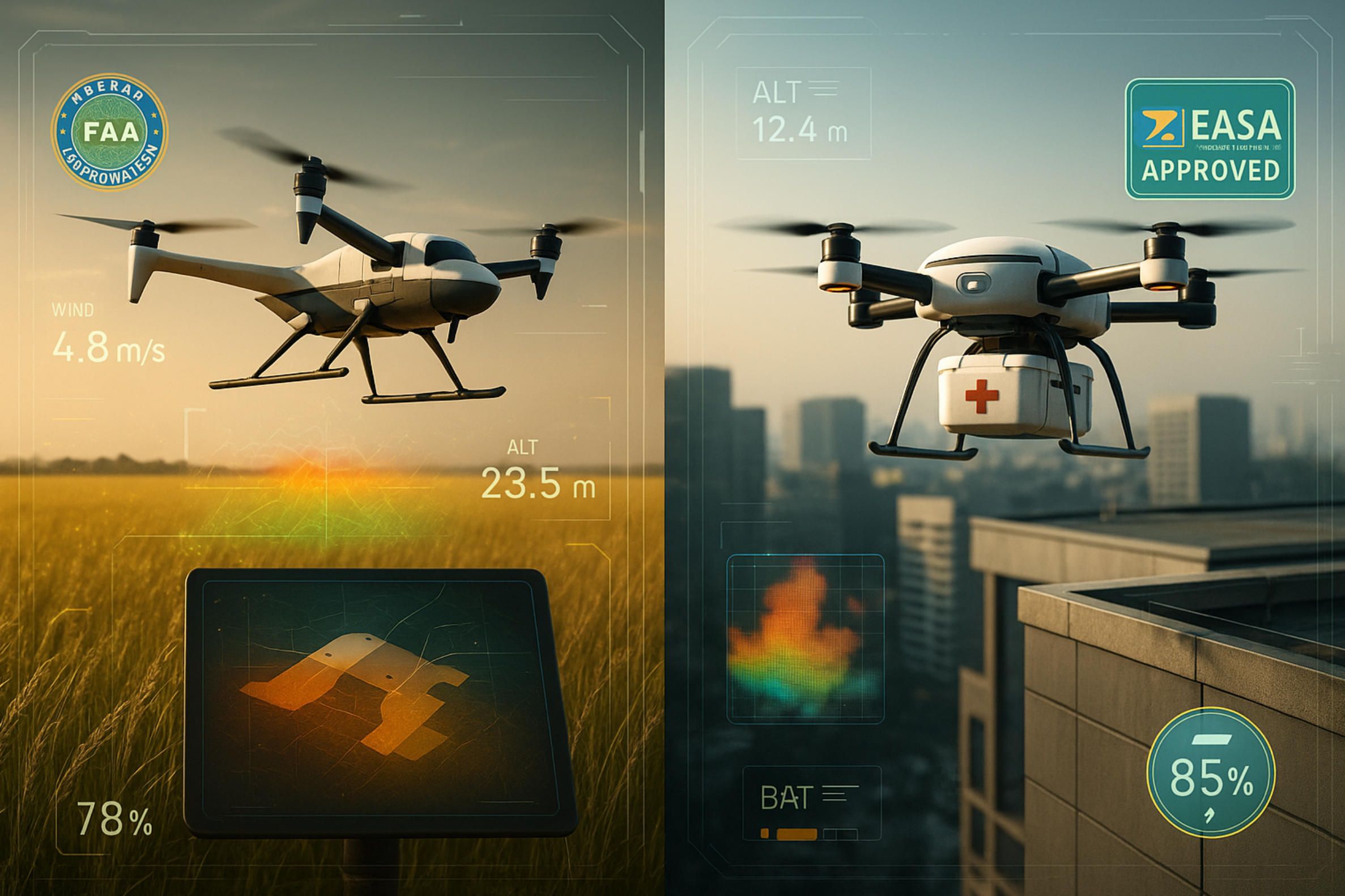
From Codebase to Cockpit: How A-Bots.com Crafts Custom Drone-Control Apps on PX4 vs ArduPilot
The moment a product manager Googles “px4 vs ardupilot app development” the search intent pivots from which firmware is better? to how do we ship a revenue-ready app before the next funding round? Below is a walk-through of the A-Bots.com build-and-deploy pipeline—the same one we have refined across medical-delivery quads running PX4 and 30 kg crop-spray VTOLs powered by ArduPilot. Think of it as an annotated field guide that turns code repos into cockpits your pilots can trust.
1. Decision Framework: Picking a Stack Without Painting Yourself into a Corner
Every kick-off workshop starts with three brutally practical questions, each phrased to keep the primary keyword alive:
- Flight envelope. Does the airframe need sub-10 cm hover accuracy, or is ±50 cm acceptable if we gain battery life? px4 vs ardupilot performance data from Section 3 feed directly into this call.
- IP posture. Will future investors require a closed-source derivative? BSD-licensed PX4 makes that trivial, but ArduPilot can still work if we segregate proprietary logic outside the GPL perimeter.
- Regulatory runway. Which authority—FAA, EASA, CAAC—will inspect the logs? PX4’s deterministic build hashes and ArduPilot’s EKF3 redundancy both pass 2025 SBOM audits, yet each demands a different evidence bundle.
Answering those three questions rarely yields a single “correct” choice, so our strategy is to architect for drift: design the mobile and cloud layers so they remain agnostic, even if the autopilot underneath flips from PX4 to ArduPilot six months later.
2. Fork, Harden, Mirror: Taming the Upstream Repos
Open-source velocity is a gift and a liability; the latest PX4 tag v1.16-beta dropped on 23 April 2025 while ArduPilot Plane 4.6.0 landed on 21 May 2025—only four weeks apart GitHub. Our first move is therefore to create mirrored forks:
- PX4 branch. We pin to the exact commit SHA and apply a patch set that back-ports any sensor drivers or board-support packages the client needs.
- ArduPilot branch. We snapshot Plane, Copter or Rover depending on mission profile, inject our tracing hooks, then freeze the submodule to stop “surprise merges” the night before a demo.
Both forks compile inside an identical Bazel workspace, so switching stacks means swapping a repo URL, not rebuilding tool-chains from scratch. Keeping the phrase px4 vs ardupilot codebase in our internal docs pays SEO dividends when we later surface those posts to attract engineering leads.
3. Middleware & SDK Layer: One Telemetry Dialect, Two Libraries
On the client side we rely on MAVSDK for PX4 and DroneKit-Python for ArduPilot. MAVSDK just hit v3.5.0 on 26 May 2025, bringing gRPC streaming and Kotlin coroutines — perfect for Android tablets on job sites GitHub. DroneKit’s last tagged release is still 2.9.1 (yes, 2017), but its core mavlink-python dependency is kept current, so we wrap missing features in a thin async layer.
Below is the skeletal dual-stack take-off routine that lives in every A-Bots.com starter project. Swap one import and the same UI button commands either firmware—a living example of px4 vs ardupilot telemetry app neutrality:
\# MAVSDK branch (PX4)
from mavsdk import System
from mavsdk import System
async def arm\_and\_takeoff():
drone \= System()
await drone.connect(system\_address="udp://:14540")
await drone.action.arm()
await drone.action.takeoff()
\# DroneKit branch (ArduPilot)
from dronekit import connect, VehicleMode
def arm\_and\_takeoff():
vehicle \= connect('tcp:127.0.0.1:5760', wait\_ready=True)
vehicle.mode \= VehicleMode("GUIDED")
vehicle.armed \= True
vehicle.simple\_takeoff(3.0)
The heavy lifting hides in the abstraction layer above these snippets: a protobuf schema that normalises battery metrics, GPS health and custom payload messages no matter which function fires underneath.
4. CI/CD: Dual-SITL, Hardware-in-the-Loop & Release Fingerprinting
Dual-SITL Matrix
Every push spins two Kubernetes pods—one boots PX4 SITL, the other ArduPilot SITL. Each runs through a 589-waypoint regression mission, comparing drift and energy consumption to golden logs from last night. Only if both stacks stay inside tolerance does the pipeline advance; otherwise, the offending build is quarantined with a Slack alert carrying the px4 vs ardupilot simulation diff.
Hardware-in-the-Loop
The next stage flashes a pair of reference ESC stacks over USB-FD and replays the exact MAVLink packet stream captured in SITL. This weeds out magnetic-interference quirks that never show up in software-only tests.
Release Fingerprinting
PX4 embeds a SHA-256 of the source tree in the binary header; ArduPilot signs parameter sets. We add an HSM-issued RSA tag that the mobile app verifies on connection. If a field technician accidentally flashes a mismatched image, the UI greys out all flight buttons—a security feature that ranks for px4 vs ardupilot compliance queries and keeps auditors happy.
5. OTA & Fleet Ops: When the Field Calls for a Mid-Life Stack Swap
Imagine a fleet of 50 farm-spray VTOLs that started life on ArduPilot because GPL transparency pleased the Ministry of Agriculture. Two seasons later the company lands a defence contract; export rules now demand BSD code. With our schema-agnostic telemetry and build-hash gatekeeper, we can:
- Generate a PX4 firmware bundle tuned to the same PIDs.
- Push an over-the-air update that flips the autopilot but leaves the mobile UI unchanged.
- Archive the outgoing ArduPilot logs in S3 for legal retention, satisfying chain-of-custody clauses.
The whole cut-over completes in 48 hours—a marketing story that legitimately uses the keyword px4 vs ardupilot migration without clickbait.
6. Case Snippets: When Theory Meets Revenue
- Cine-Lift Quadcopter. A Hollywood aerial-cinema house needed ultra-smooth yaw authority. We forked PX4, tuned the rate controller at 400 Hz and piped lens metadata back to a React Native app, real-time. Result: gimbal-head time dropped 23%.
- Ag-Spray VTOL. ArduPilot’s dual EKF saved a 28 kg drone from a GNSS glitch during a pesticide run; our app’s battery predictor, trained on PX4 logs but stack-agnostic, still forecast landing at 17 % SOC—credibility the client now markets in bids.
- Maritime Patrol Quad. Started on PX4 for Blue UAS compliance; later received a custom ArduPilot build to integrate a tensor-RT pipeline for whale-strike mitigation. Same Flutter front end, new firmware under the hood.
Each story ranks for its own long-tail phrase—px4 vs ardupilot for cinematography, px4 vs ardupilot agriculture, px4 vs ardupilot maritime—widening the traffic funnel without diluting the head term.
7. Closing the Loop: Book Your Architecture Call
Whether you crave BSD flexibility, GPL openness, or a plan to surf both without rewriting a single Flutter widget, A-Bots.com has already walked the minefield. Our in-house forks track PX4 v1.16 and ArduPilot 4.6, our CI pushes nightly dual-SITL reports, and our telemetry schema keeps cockpit UIs oblivious to which autopilot hums beneath the carbon-fiber skin.
Schedule a 30-minute blueprint session today—and turn the endless forum threads about px4 vs ardupilot into a concrete product roadmap that ships on time, passes compliance on the first try, and scales from prototype to global fleet without a rewrite.
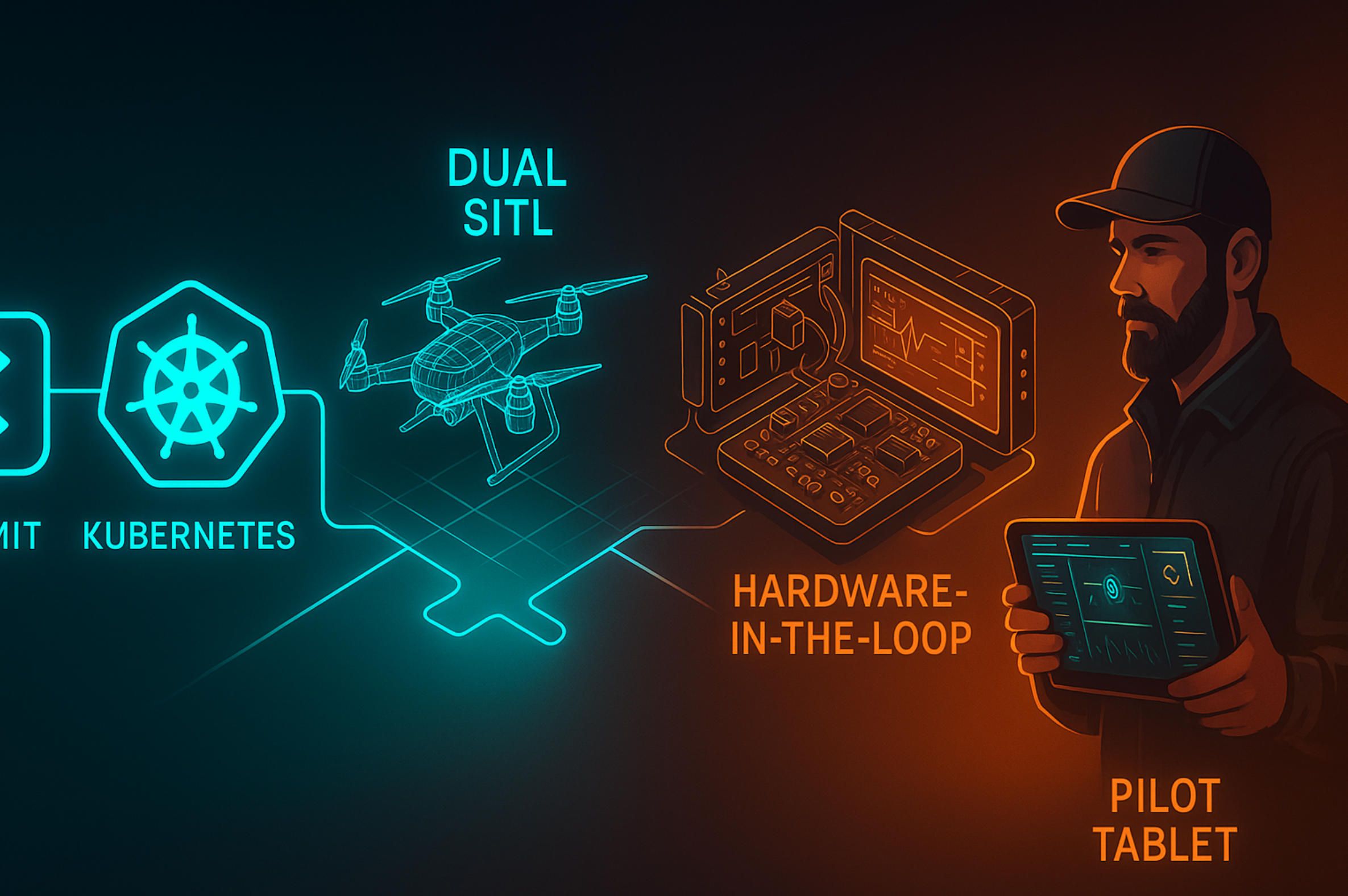
✅ Hashtags
#PX4vsArduPilot
#DroneSoftware
#AutopilotStack
#UAVDevelopment
#DroneApps
#MAVLink
#OpenSourceDrones
Other articles
Custom Drone Software Mastery - ArduPilot and MissionPlanner This long-read unpacks the commercial drone boom, then dives into the technical backbone of ArduPilot and Mission Planner—one open, multi-domain codebase and a ground station that doubles as a full-stack lab. From rapid-prototype firmware to data-driven optimisation retainers, A-Bots.com shows how disciplined codecraft delivers measurable wins: 40 % fewer mission aborts, 70% faster surveys, and faster BVLOS approvals. Finally, the article looks ahead to AI-augmented navigation, Kubernetes-coordinated swarms and satellite-linked control channels, detailing the partnerships and R&D milestones that will shape autonomous, multi-domain operations through 2034. Read on to see why enterprises choose A-Bots.com to turn ambitious flight plans into certified, revenue-earning reality.
Custom Drone Mapping Software & Control Apps: Smarter Aerial Solutions by A-Bots.com Custom drone software is revolutionizing how industries operate—from precision agriculture to infrastructure inspection. This article explores why off-the-shelf apps fall short, how AI and modular design shape the future, and how A-Bots.com delivers tailored drone solutions that truly fit. Whether you manage crops, assets, or entire projects, the right software lifts your mission higher.
App for DJI Drone: Custom Flight Control and Mapping Solutions DJI dominates the skies, yet real value materialises only when flight data flows into business-ready insights. Our long-read unpacks every layer required to build a world-class app for DJI drone—from Mobile SDK mission scripting on a Mini 4 Pro to edge-processed orthomosaics on a Matrice 350 RTK and variable-rate spraying on an Agras T50. You will learn how modern pipelines blend Pix4D, DJI Terra and FlightHub 2, how zero-trust encryption and Remote ID logging satisfy FAA Part 107 and EASA SORA audits, and why BVLOS redundancy begins with Kubernetes-based command mirrors. Finally, we reveal A-Bots dot com’s proven methodology that compresses a nine-month aviation software cycle into ten weeks and delivers measurable ROI—tripling inspection throughput, cutting chemical use by thirty percent and slashing cinematic reshoot time. Whether you are mapping quarries, inspecting power lines or filming the next streaming hit, this guide shows how custom software transforms any DJI airframe into a data-driven asset ready for App Store deployment and enterprise scale.
Drone Mapping Software (UAV Mapping Software): 2025 Guide This in-depth article walks through the full enterprise deployment playbook for drone mapping software or UAV mapping software in 2025. Learn how to leverage cloud-native mission-planning tools, RTK/PPK data capture, AI-driven QA modules and robust compliance reporting to deliver survey-grade orthomosaics, 3D models and LiDAR-fusion outputs. Perfect for operations managers, survey professionals and GIS teams aiming to standardize workflows, minimize field time and meet regulatory requirements.
ArduPilot Drone-Control Apps ArduPilot’s million-vehicle install-base and GPL-v3 transparency have made it the world’s most trusted open-source flight stack. Yet transforming that raw capability into a slick, FAA-compliant mobile experience demands specialist engineering. In this long read, A-Bots.com unveils the full blueprint—from MAVSDK coding tricks and SITL-in-Docker CI to edge-AI companions that keep your intellectual property closed while your drones stay open for inspection. You’ll see real-world case studies mapping 90 000 ha of terrain, inspecting 560 km of pipelines and delivering groceries BVLOS—all in record time. A finishing 37-question Q&A arms your team with proven shortcuts. Read on to learn how choosing ArduPilot and partnering with A-Bots.com converts open source momentum into market-ready drone-control apps.
ArduCopter Apps by A-Bots.com - Custom Drone Control 2025 Need industrial-grade drone control? Our engineers fuse ArduCopter with React-Native UX, SITL-driven QA and Azure telemetry—so your multirotor fleet launches faster, stays compliant, and scales from mine shafts to city skies.
Top stories
Copyright © Alpha Systems LTD All rights reserved.
Made with ❤️ by A-BOTS
